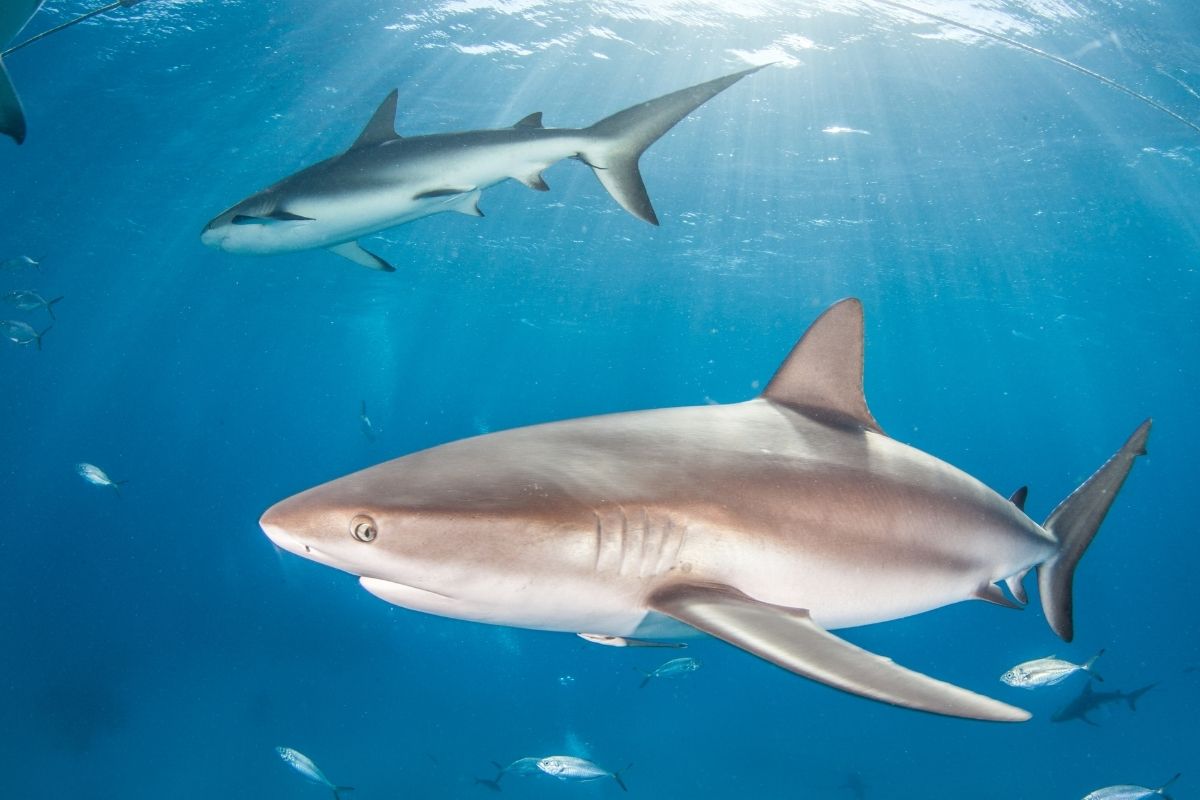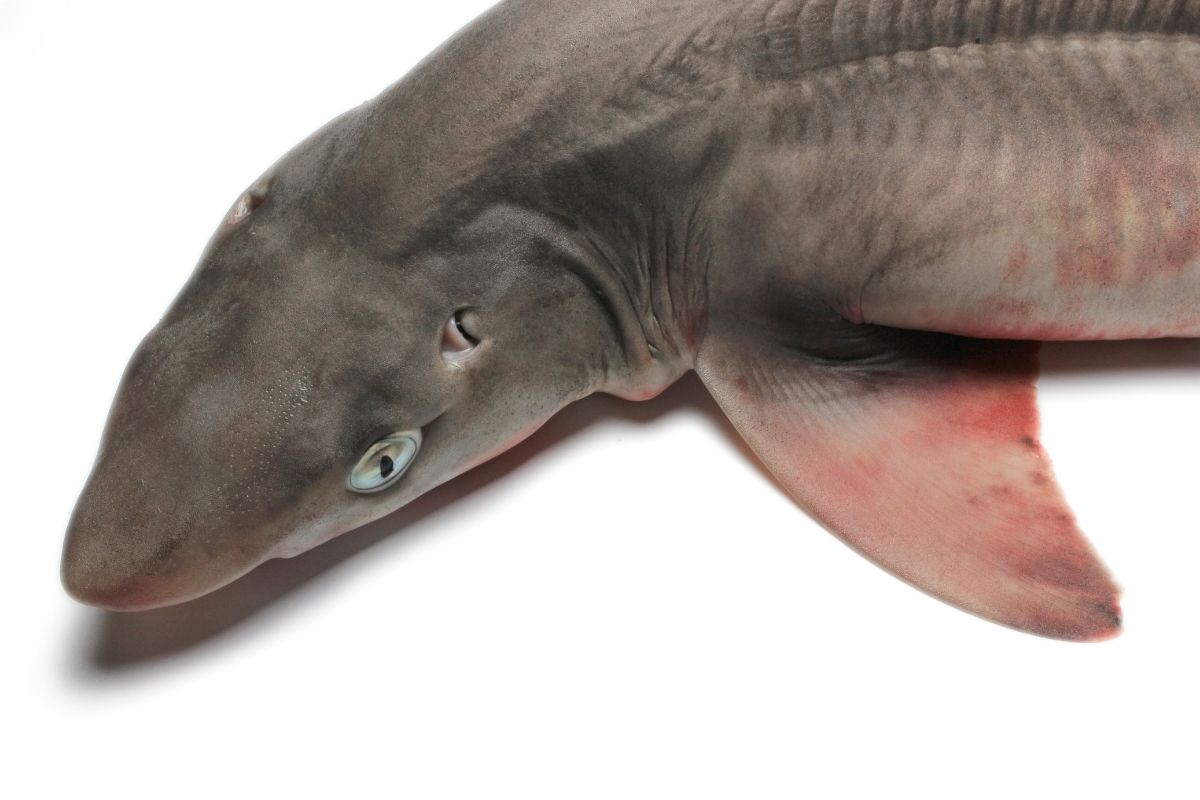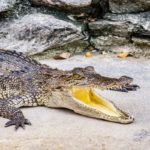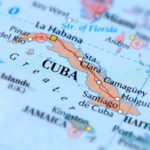Cuba is a gorgeous island that is choked full of life of all kinds, from the unique flora to the distinct fauna too.

So, when you combine that with the warm shallow waters that surround this tropical paradise, you get the perfect combination for a massive amount of marine life too!
There are all sorts of animals that call the waters around Cuba their home, and amongst the many ecological niches under the waves, in front eh coral reefs, to the mangrove forests, and the underwater plains of seagrass.
All these provide the perfect environment to cultivate lots of smaller fish and other marine animal species. This means that, wherever prey animals live, predators are sure to follow.
So, you can be that sharks are a pretty common sight in the seas around Cuba!
The waters of the Caribbean are home to a massive variety of the Caribbean are home to hundreds of species of sharks, which has led many people to wonder if any of them can be found around Cuba, as well as if any of them are dangerous to swim with, or even be in the water when they are around.
This guide is to help answer those burning questions.
In this piece, we are going to explain some of the things that make Cuba such a popular spot for sharks to live and visit, as well as some of the species that you can find around the island.
We’re also going to cover if any of these species are dangerous, and whether it is possible to go swimming with them.
Sharks In And Around Cuba
As we have already mentioned, the seas around Cuba are warm and shallow, making it a paradise for many tropical underwater environments to thrive, which in turn attracts many species of tropical marine animals, from fish to turtles, and of course, sharks.
However, one of the things that makes Cuba such a great place for shark life is the environmental laws that have been passed to help protect Cuba’s natural beauty.
The country has the largest collection of Marine Protected Areas (also known as MPAs) that can be found in the Caribbean.
This includes some 30% of coral reefs around the island country, as well as 24% of all seagrass beads around Cuba as well.
The mangrove areas are some of the most protected spaces, with over 35% being legally protected as well.
The MPAs that have been made so far include 13 that are managed to standard, as well as 57 legally incorporated spaces.
And this isn’t even counting the total of 108 that was planned between 2003 and 2008.
This has been a larger push by Cuba to protect at least a portion of its natural habitat, with over 20% of its total territory protected from interference.
However, as tourism and fishing become a bigger part of its economy, time will tell what will happen to Cuba’s protected zones.
For now, however, it is the perfect home for a variety of smaller tropical species of sharks to live and thrive in Cuba’s waters.
However, given that the waters are not particularly deep, this does not allow for many of the larger and more iconic species of sharks to live here, who tend to prefer deeper and colder waters, where they have more freedom to move and are less likely to overheat.
Still, by this logic, it is recommended that most tourists who are looking to swim in Cuba’s beautiful waters, both for relaxing, as well as wildlife spotting, should avoid deeper waters, as the chances of spotting larger and potentially more dangerous species increase slightly.
Shark Species In Cuba
So, as we have already mentioned, many of the shark species that are found in Cuban waters tend to be a little smaller, thanks to the shallow seas.
However, it is still possible to encounter a larger shark species from time to time.
Caribbean Reef Shark

This species is found across the East coast of these Americas, from Florida down to Brazil.
Being a tropical species of shark, the warm Cuban waves are perfect for this species and is one of the most commonly spotted across the Caribbean.
They are usually shy, but become bolder when finding food. Being quite large, shark attacks from this species are incredibly rare and have never caused a fatality.
Cuban Dogfish

Another fish that lives in the tropics, the Cuban dogfish is a very common sight to see in the waters of the Caribbean, loving the shallow inland seas that are close to the continental shelves they live by in more open waters.
Being small, they have never been known to attack humans, so there is no danger whatsoever coming from them.
Diving With Sharks In Cuba
So, with so many sharks to see around Cuba, is it possible to go to any diving spots to get a closer look at them?
There are many protected natural reefs that many sharks love to swim around in Jardines de la Reina, where several species, such as the Caribbean Reef shark, are known to live.
Take all the necessary precautions before going out to swim.
Frequently Asked Questions
Are Shark Attacks Common In Cuba?
With all this talk about the number of shark species that are found in Cuba, many will likely be wondering if there are a lot of shark attacks recorded on the island.
After all, more sharks must mean more chance of shark attacks, right?
Well, that’s not necessarily the case.
As we already mentioned, most of the sharks that live around Cuba are small or docile, meaning that actual shark attacks are incredibly rare.
As an example, the total number of recorded shark attacks in the US since 1580 totals around 1,300, which sounds like a lot, but only averages out at around 4 to 5 attacks per year, if that.
In Cuba, that number is even lower, with only 11 attacks recorded in the same period. That only takes one person and a friend’s fingers to count!
However, it is recommended as a precaution that swimmers avoid going out into deeper waters after late evening or at night, as this is when sharks are most active.
However, you’re just as likely to be stung by a jellyfish than even spot a shark at this time!
Are There Any Dangerous Animals In Cuba?
With all this talk of dangerous animals to humans (or rather, the lack of), some people may be wondering whether there are any dangerous animals to be found at all in or around Cuba.
After all, there are no large bears, canines or cats to be found on the island, so are there even any predators that can harm people? Perhaps a venomous snake, or even an insect or spider?
You’ll be happy to know that there are no known venomous animals in Cuba. Or at least, none that are dangerous to humans.
Final Thoughts
As you can see, Cuba is a paradise not just for people, but for sharks too it seems!
- What Is The Largest Island In Cuba? - September 19, 2022
- Havana – Why Is It Cuba’s Most Exciting City? - September 19, 2022
- Cheapest Time To Visit Cuba (Ultimate Guide) - September 19, 2022








